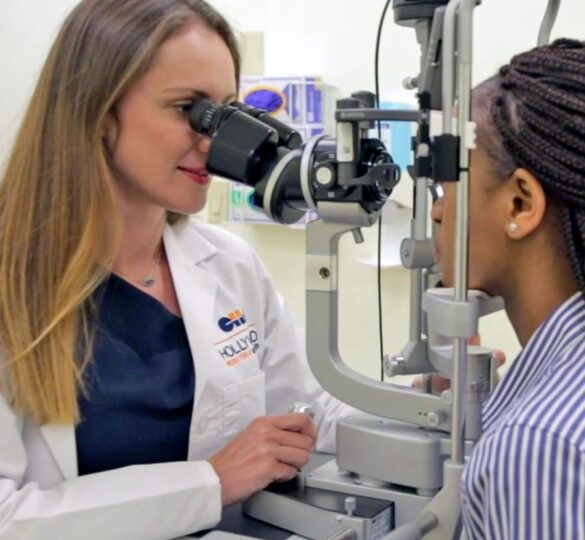Combination Surgery: Treating Cataracts and Glaucoma Together
Cataracts are like wrinkles — everyone gets them when they get older. When people with glaucoma get cataracts, it’s the perfect opportunity to treat both problems at once.

During cataract surgery, doctors can perform a simple, safe glaucoma procedure, so people get the clear vision they need as well as control of intraocular pressure (IOP).
With clear vision and relief from the burden of glaucoma medications, people can have a better quality of life and avoid vision loss from glaucoma.
What is Combination Surgery?
Just a few years ago, cataracts and glaucoma were always treated separately. Cataract surgery was a very common, very safe procedure, while glaucoma surgery was riskier, so doctors reserved it only for advanced cases. Today, people with glaucoma have a new set of options, called minimally invasive glaucoma surgeries (MIGS). These procedures have much lower risk than older glaucoma surgeries, and they can help people at every stage of glaucoma use fewer medications or even stop taking medication entirely.
Instead of glaucoma surgery being a late-stage last resort after people lose some vision, it is now an earlier step that prevents vision loss. And because cataracts are so common, combining cataract surgery with MIGS is an excellent way to bring these benefits to more people who need it.
Choosing the Right MIGS
If you have glaucoma and you need cataract surgery, your doctor will do a full evaluation, including details about the type of glaucoma you have, the stage of the disease, and the best IOP for you to achieve (your “target pressure”). If you have the most common type, primary open-angle glaucoma, then you could be a candidate for MIGS.
Some MIGS options include Hydrus (Ivantis), iStent (Glaukos), Kahook Dual Blade (New World Medical), and XEN Gel Stent (Allergan). Your surgeon will discuss all the options, risks and benefits of various MIGS and recommend the best option for you.
Keep in mind that there is always “plan b”; there are many MIGS procedures, and if one doesn’t achieve the target IOP, then you can try another device without the risks of a major procedure. For example, Kahook Dual Blade or XEN can be used after cataract surgery as stand-alone procedures.
Adding MIGS to cataract surgery has no effect on which lens you choose. For example, I routinely perform MIGS procedures in combination with standard lenses as well as with toric lenses, which correct astigmatism.
A Brighter Future for People with Glaucoma
We can’t reverse the damage caused by glaucoma, so we must take every opportunity to prevent it. As more surgeons have learned to use MIGS, cataract surgery has become a golden opportunity to treat glaucoma by adding a low-risk procedure for people who are already having surgery. This makes a difference in people’s lives. People with glaucoma often need to use multiple eye drop medications every day for years, which is often inconvenient, confusing, and uncomfortable. By having combination surgery, more and more people will prevent vision loss and have a better quality of life.
Article by Alena Reznik, MD.
Posted on June 19, 2019; Last reviewed December 15, 2021.

Alena Reznik, MD
Alena Reznik, MD is Associate Medical Director at Southern California Eye Institute, CHA Hollywood Presbyterian Medical Center, Los Angeles, CA.